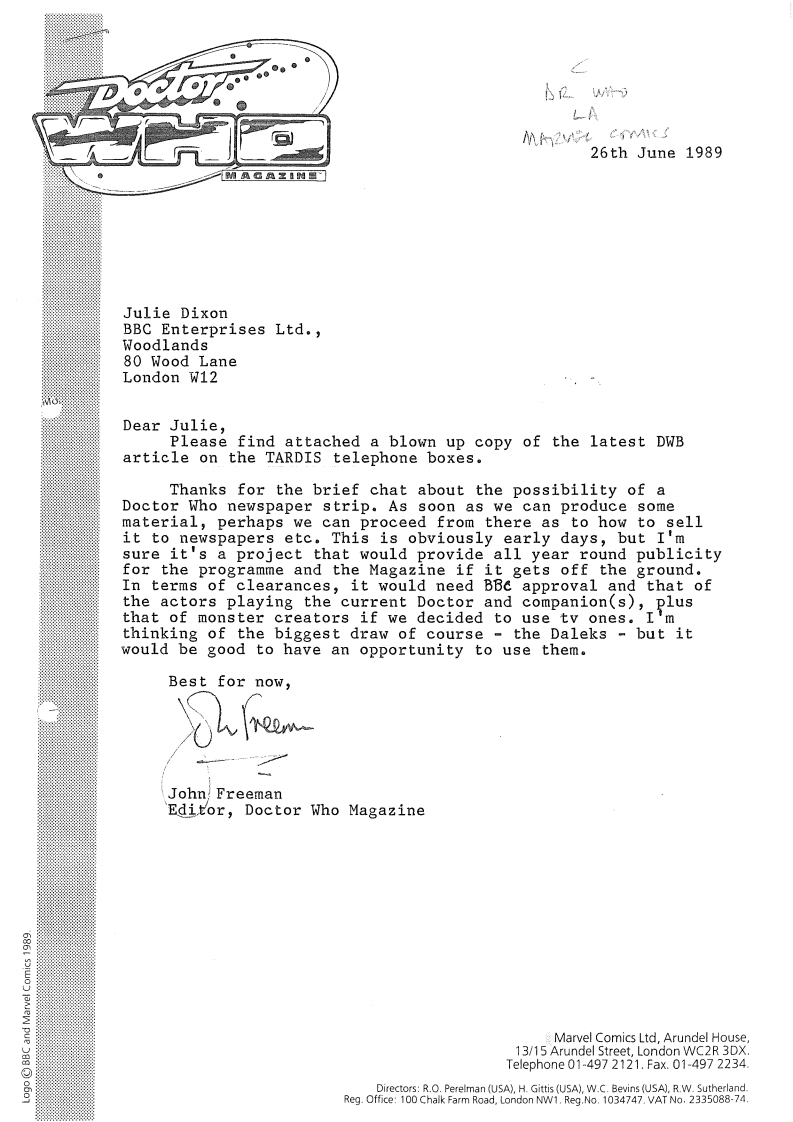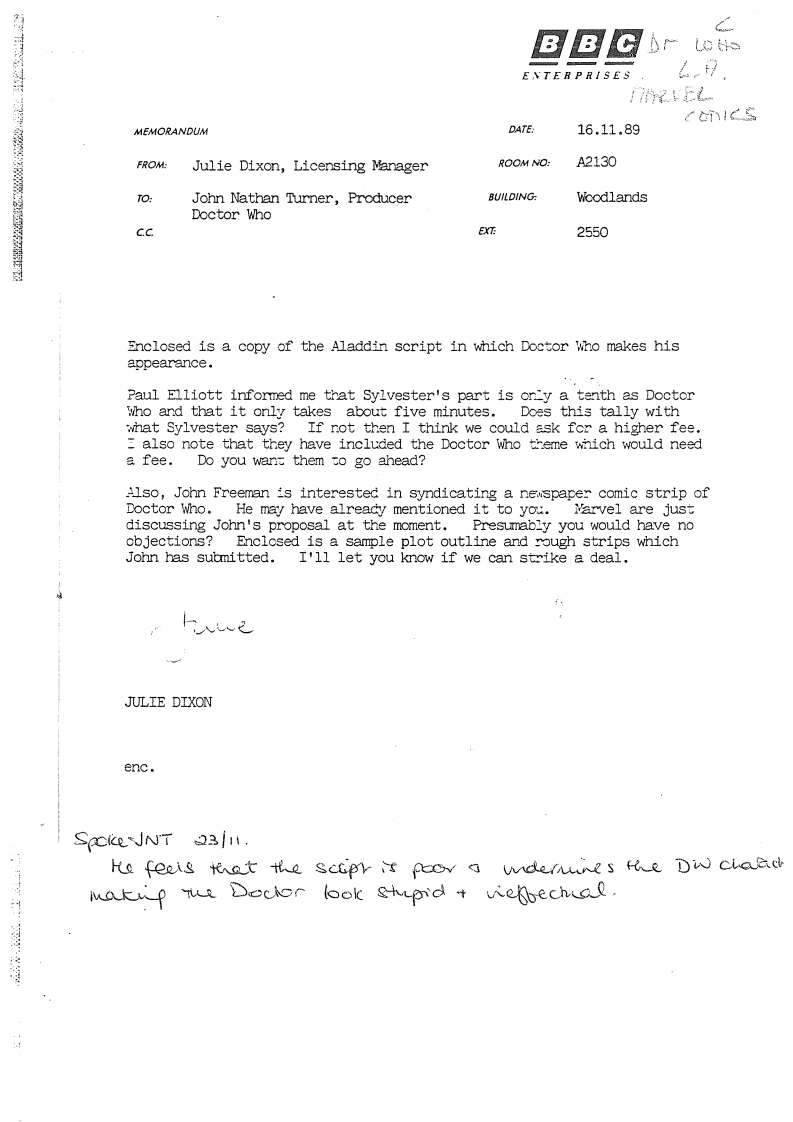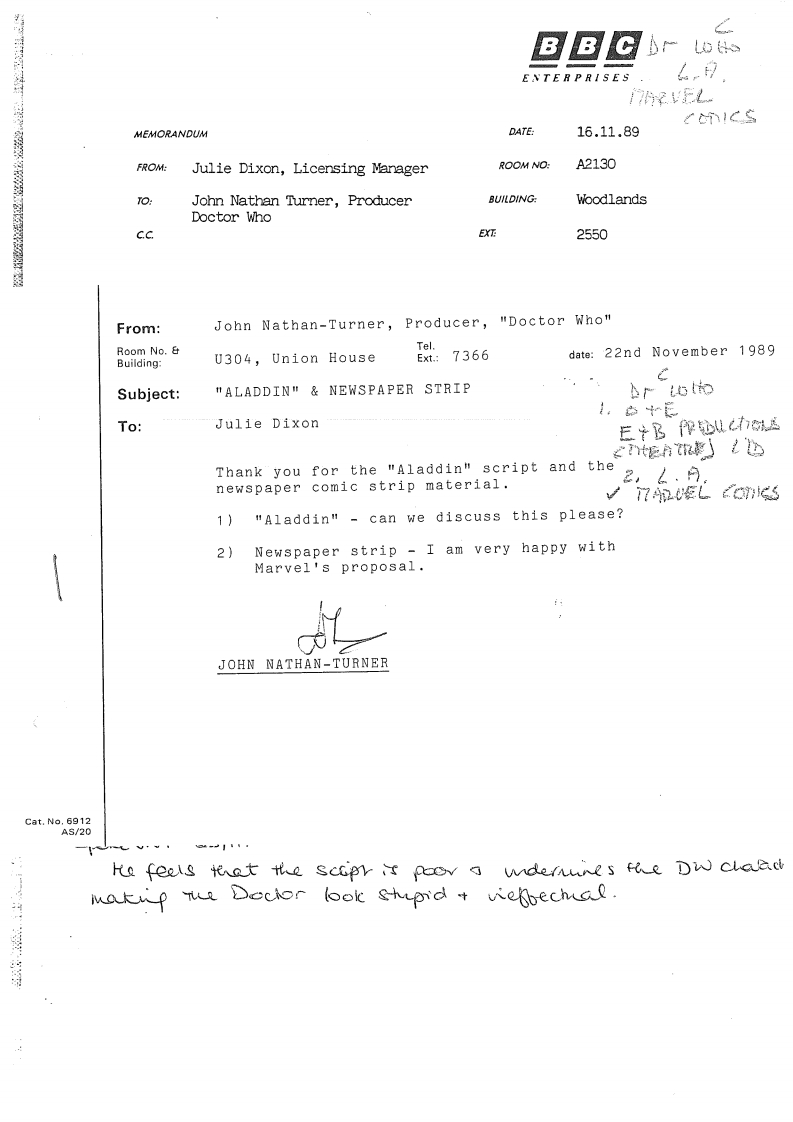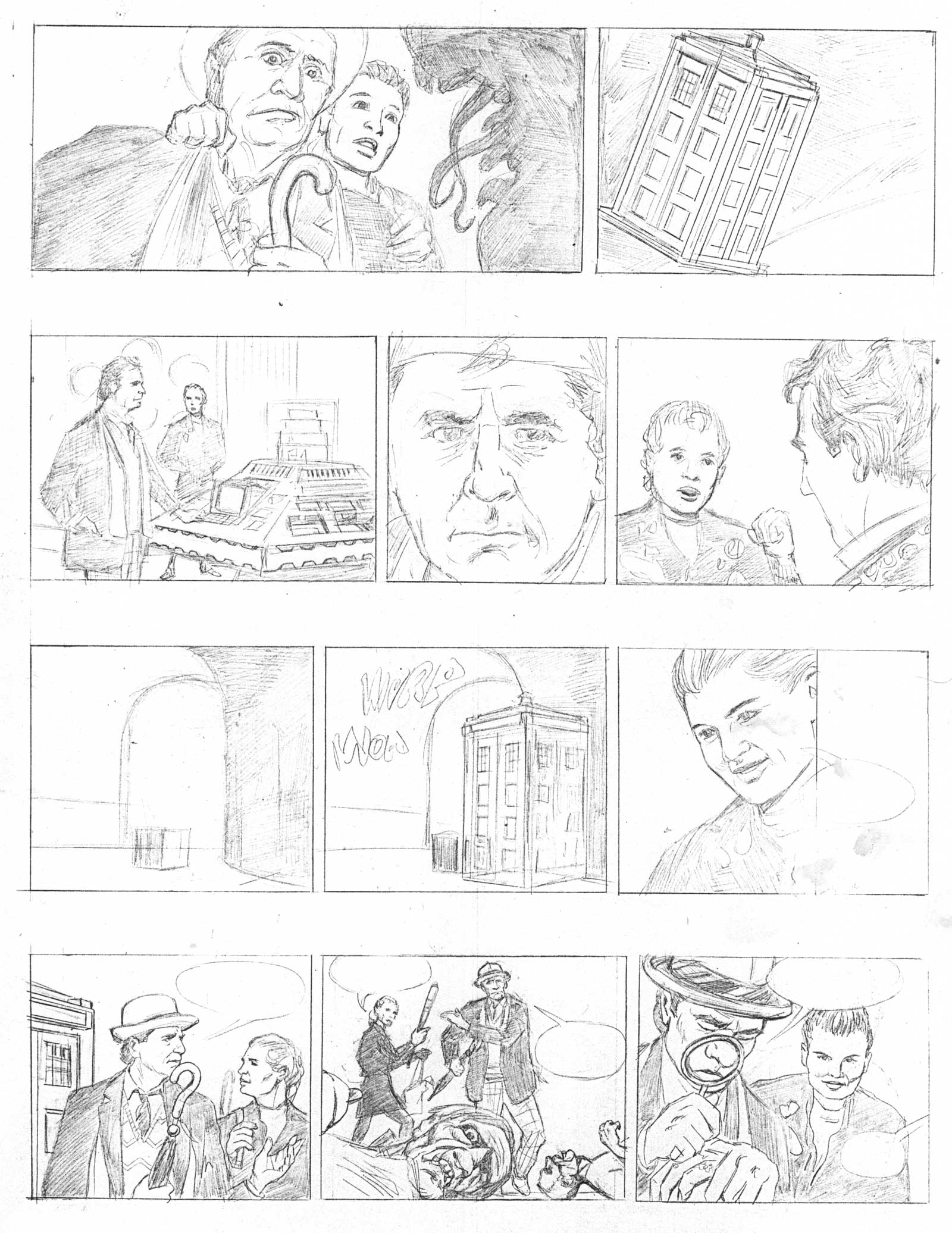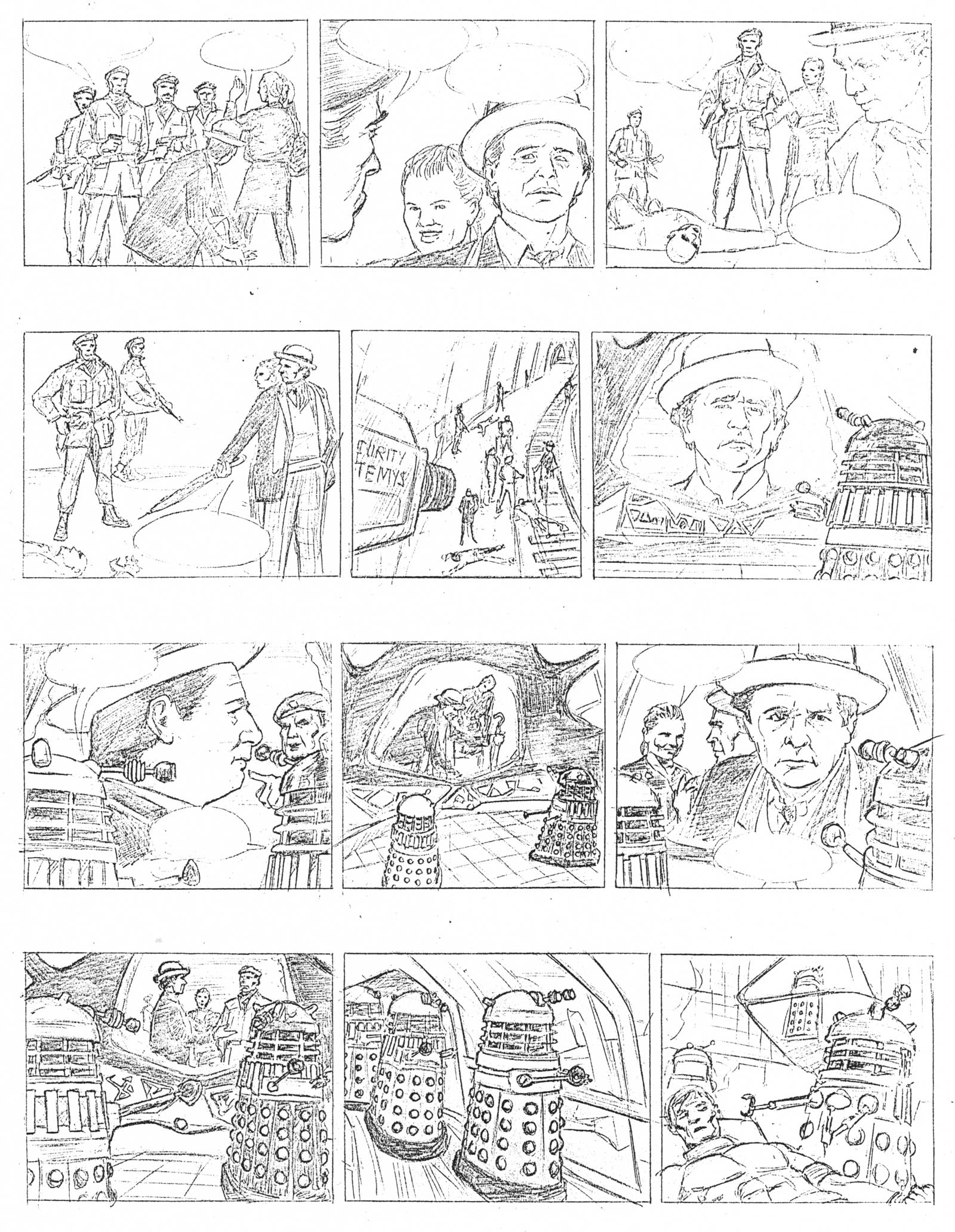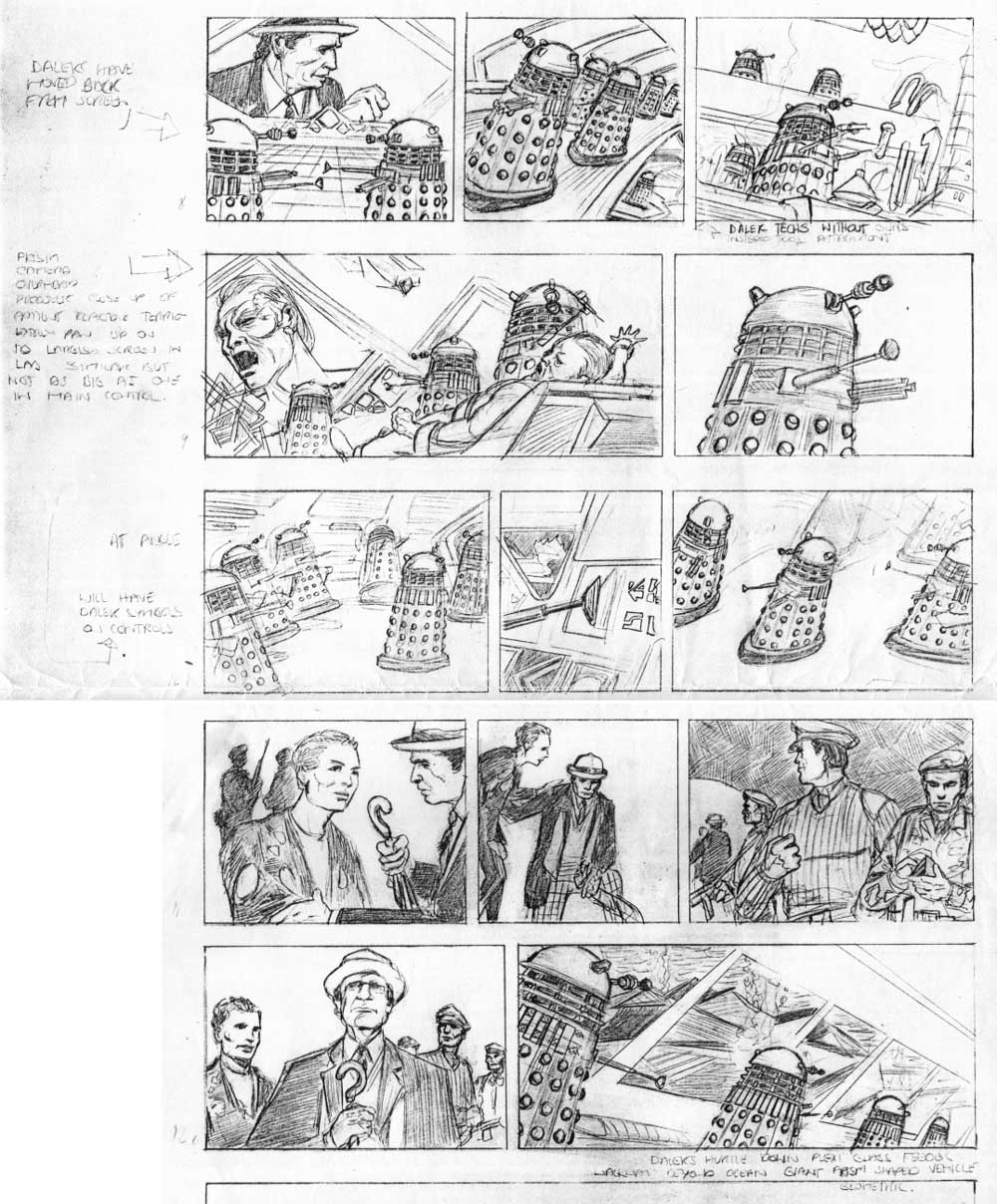The record for “longest gestation period for a piece of Doctor Who project” may seem to rest with the attempts at producing a movie, but others may catch up with it. A plan I had to launch a Doctor Who newspaper strip, for example, was an idea that had been kicked around at Marvel UK for over a year before two weeks of test strips, plotted and scripted by myself and drawn by Gerry Dolan, finally appeared in Doctor Who Magazine Issues 167 and 168 in late 1990.
Of course, as I indicated in Issue 167 under one of my editorial pseudonyms (“Paul Travers”, for those curious), that wasn’t their intended place of publication. I had rather hoped we’d see the strip published in the Daily Express, following in the tradition of a favourite newspaper strip of mine, “Jeff Hawke” – but declining interest in Doctor Who after the show went on hiatus sadly put paid to that.
This Doctor Who newspaper strip project began in the summer of 1989, when I was kindly invited to be a guest at the Carousel convention in Cardiff, alongside Lee Sullivan. It could have been your normal convention appearance: aside from the fact that the thrash metal band Anthrax were in the same hotel along with plenty of Doctor Who fans, there was nothing particularly unusual about the event.
Until we came up with the idea of trying to plot a Doctor Who newspaper strip, that is, a way of expanding the range of the usual Marvel panel. Back then, as I’m sure happens still happens now, we were bombarded with ideas for the Magazine, for the programme and for the comic strip, so I think it was Lee that suggested we throw the newspaper strip idea at the audience and see what they came up with. It also saved us from doing any thinking ourselves – or so we thought!
The elements for a plot came back thick and fast as we batted ideas from the audience. A great many of them, such as including the Master and many other monsters were rejected, but the rough story quickly formed over an enjoyable hour. The resulting tale incorporated the Daleks, UNIT, the Channel Tunnel, a deadly virus – and the Movellans. Throw in the Doctor and Ace. and I felt there were more than enough strands there to make an entertaining story that would also appeal to the general newspaper reader, not just the diehard fan.
So convinced, in fact that I got pretty excited about the idea and, after shaping up a full plot for a thirteen week, six strips per week story, the usual length of a daily newspaper adventure strip at the time, I went to BBC Enterprises (now BBC Worldwide) in late June 1989 and gained an outline permission to develop the proposal, approved by the show’s producer John Nathan-Turner.
That Marvel UK then held the comic strip licence at that time certainly helped get approval. As a company, we had a proven track record as a commercial operation, and as now with BBC Worldwide, there’s no doubt that helps any proposal Enterprises got regarding Doctor Who.
Armed with an outline agreement and, later, permissions from Terry Nation’s agent that we could feature the Daleks for the usual “appearance fee”, we went back to create a story.
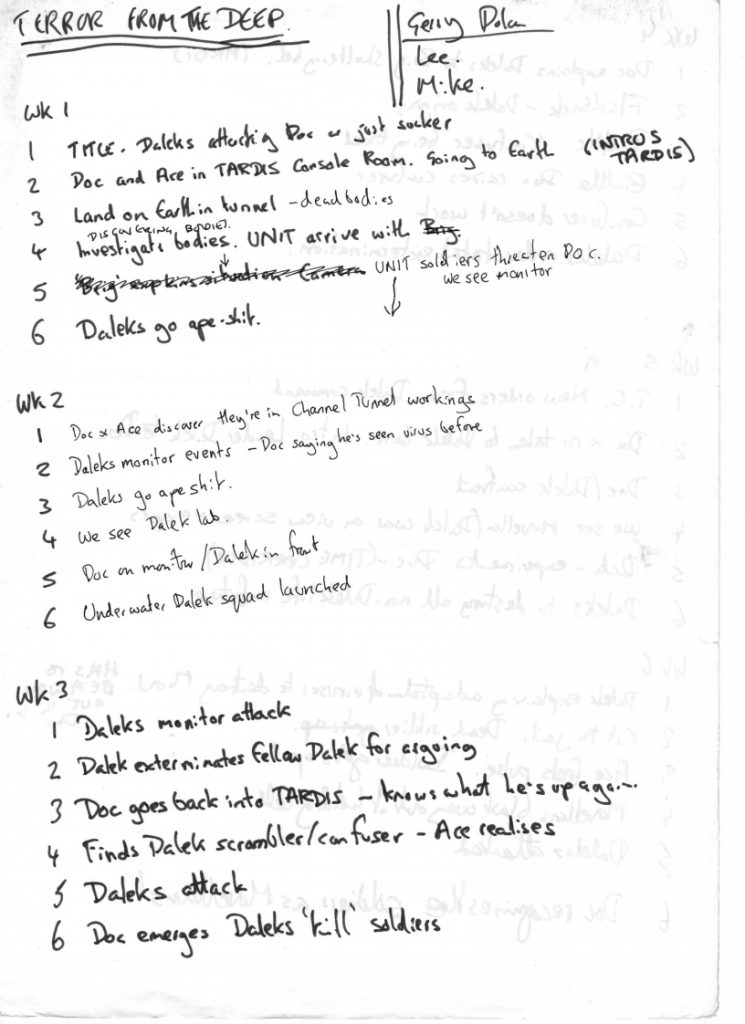
This wasn’t as easy as it sounded – while I had written serialised and one-off strips before, I had no experience of writing newspaper strips writing and I was conscious that the pacing had to be right to make the tale work. Don’t forget that this was pre-Internet and there was no easy access to writer’s guides about such strips. While a fan of both “Garth“, published by the Daily Mirror, and “Jeff Hawke“, published by the Daily Express, I needed some advice. Fortunately, comics artist Mike Collins, who had been the artist on the “Judge Dredd” newspaper strip for the Daily Star, was very kindly on hand to offer a few pointers.
What started as almost a game was beginning to look promising.
Unfortunately, my original co-conspirator in all this, Lee Sullivan, wasn’t able to commit himself to working on the visual side of the strip, despite his incredible work on the DWM strip “Nemesis of the Daleks”. When Marvel US saw Lee’s work, he’d been snapped up for their Robocop book, and he had too much work on his plans to develop the project.
“That was John’s fault,” Lee recalled for DWM Issue 167. “He took my ‘Nemesis’ pages to Richard Starkings and Robocop’s editor, Greg Wright, in the United States in the first place!”
It wasn’t until early 1990 that we finally had our first nibble at the strip, although I’m pretty sure I hawked the idea to a couple of British newspapers, perhaps before meeting Susan Bailey from the Daily Express at the Angouléme Comic Festival in January. She expressed an interest in the strip – but sadly, by 1990 Doctor Who seemed dead in terms of commercial appeal to many and nothing came of the pitch to them.
Undeterred, I pressed on with the project, knowing that I could at least run the art in Doctor Who Magazine at some point, but the hunt was on for a new artist.
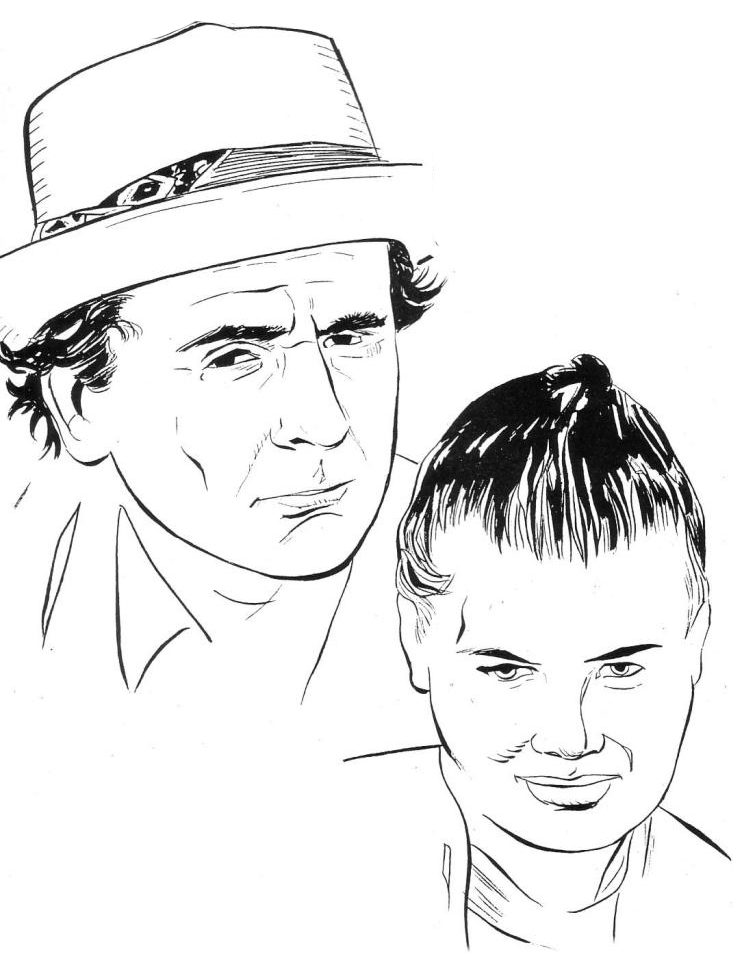
Gerry Dolan bravely slipped into Lee’s shoes, fresh from the first DWM strip I edited, “Stairway to Heaven,” written by Paul Cornell. There was more help from him too, when it came to shaping the story. While the basic day by day outline had been completed and the plot written, Gerry worked in the same studios as Sydney Jordan, co-creator of “Jeff Hawke” an his ideas helped revise and mould the final plot line into a story, told over 13 weeks, and from there, we went to scripting some samples.
The now limited correspondence I have access to indicate Gerry’s samples, were finally sent to Richard Hollis at BBC Enterprises in August 1990, before they ran in Doctor Who Magazine.
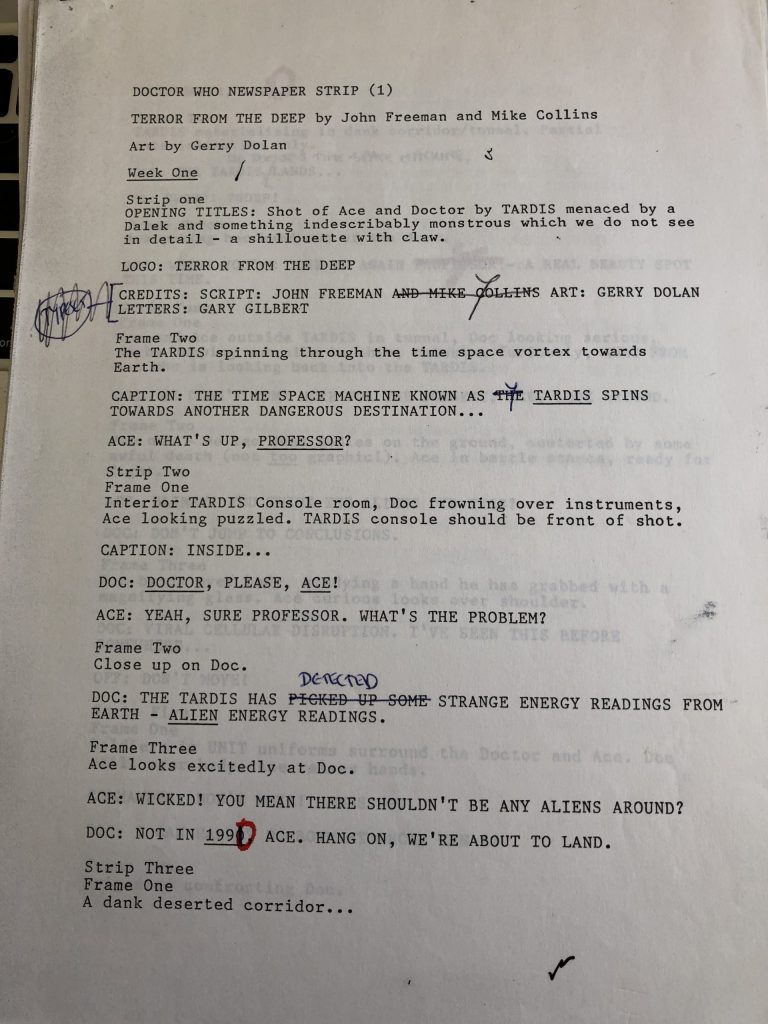
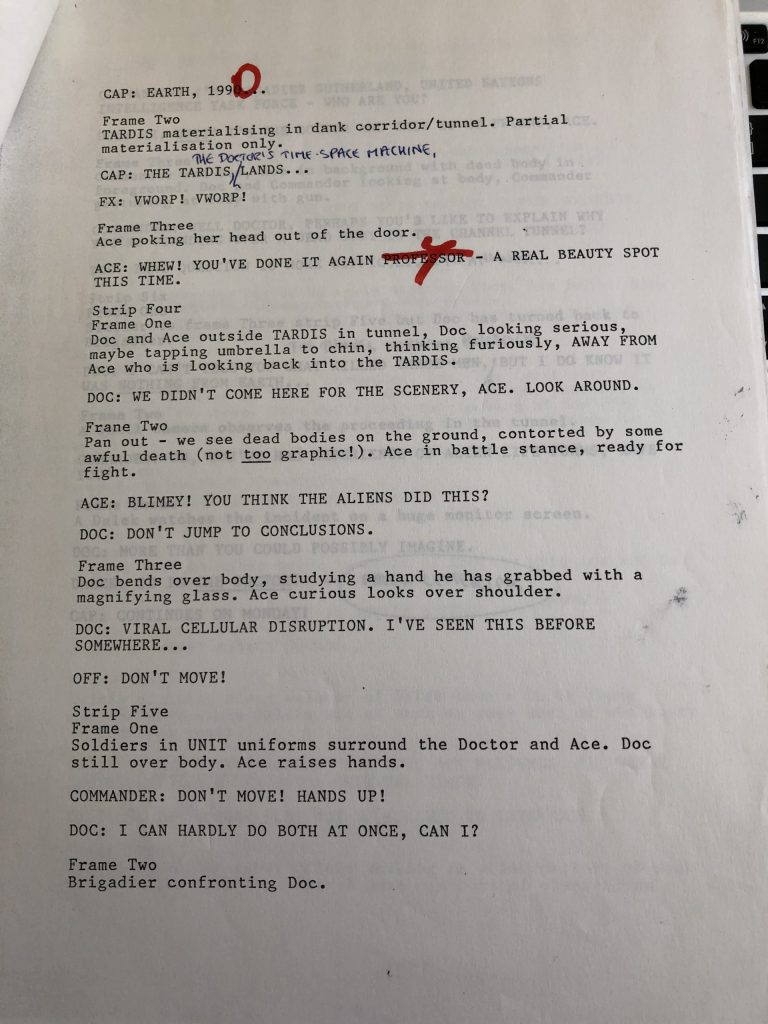
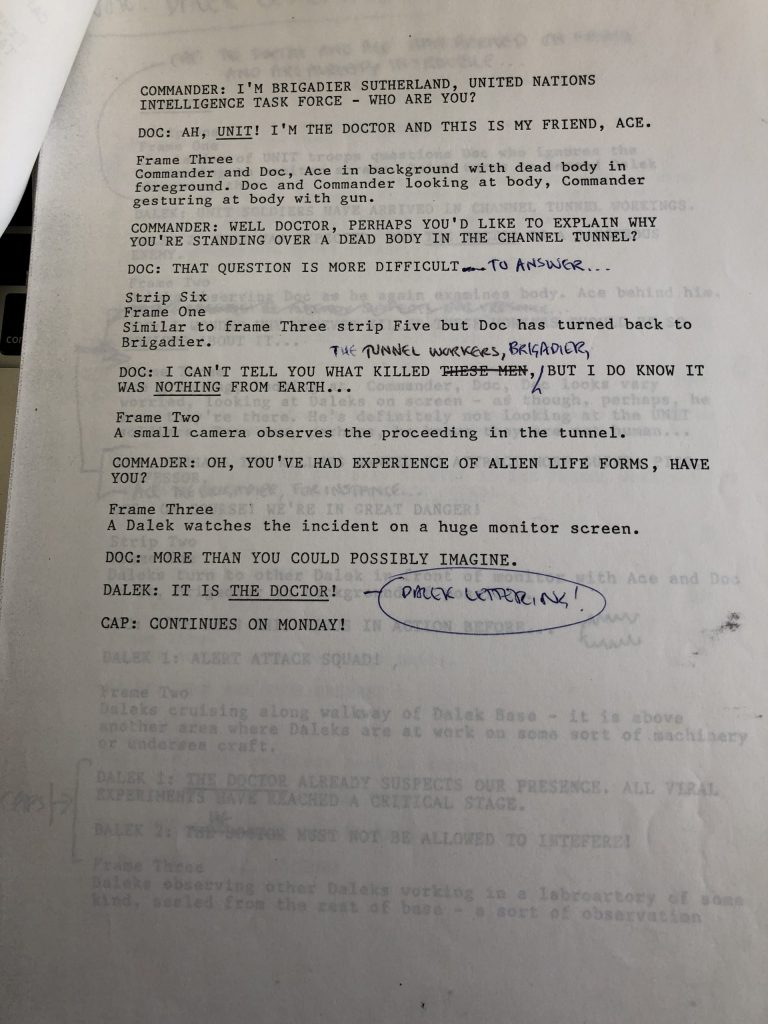
We treated creation of the newspaper strip just like a comic strip, each individual strip treated like a strip page. The action was broken down into panels and the panels described for the artist. Then the word balloons and captions are added.
You’ll notice immediately from these samples that we have two “starts” in these first few strips, introducing the Doctor and Ace and the Daleks separately. That’s because we wanted to have as many hooks as possible in the early weeks to draw readers in, and give any possible buyer of the strip itself for their paper an idea of the range of characters the strip could cover.
We stuck with the Seventh Doctor and Ace because although it did seem their run on the show had come to an end – although the BBC never officially said so at the time – they were the TARDIS crew running in DWM‘s lead strip and, despite the show’s hiatus, the ones still more recently associated with the show.
(The same thing happened with a proposal for a Doctor Who/ Doctor Strange crossover proposed by former Doctor Who Script Editor Andrew Cartmel, to be drawn by Lee Sullivan, which Tom de Falco at Marvel US liked as an idea – but felt any such team up would have been more in the interests of Doctor Who at the time, which Marvel didn’t own, than Doctor Strange, which it did).
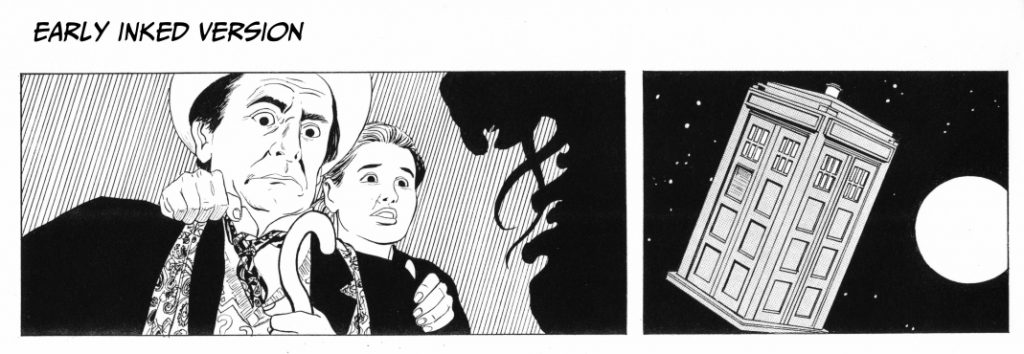
One other reason for the strip’s failure to gain any traction with British newspapers I targeted, apart from Doctor Who‘s then perceived lack of mainstream popularity – who could imagine that situation now? – was that newspapers themselves were losing faith in adventure strips as part of their Unique Selling Point. Humour strips and one off gags were a far easier sell – and back then, successfully securing a newspaper commission was a fiercely competitive market. (It’s even harder now, as newspaper incomes have declined and they have all gutted their strip content, as downthetubes has often documented).
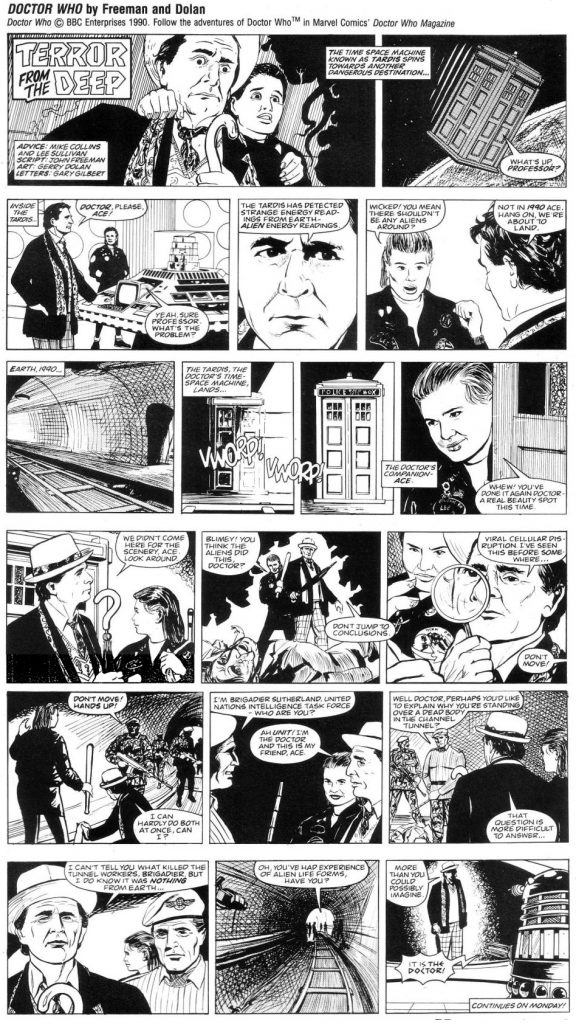
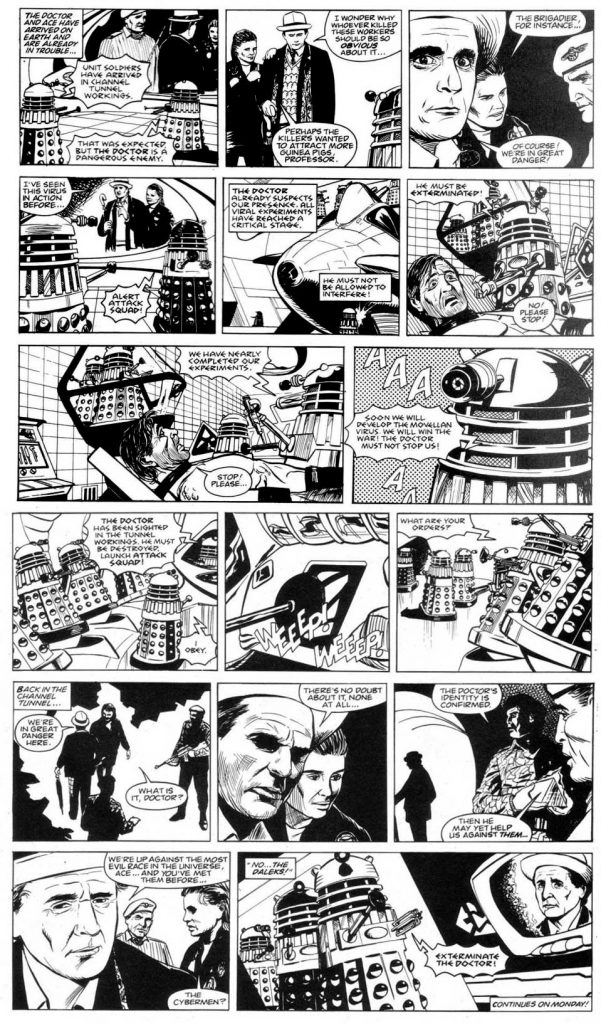
It’s a shame our Doctor Who newspaper strip never took off. I still feel that an ongoing daily adventure strip is something that gives a newspaper a hook for new readers every day, to persuade them to buy the next day’s paper. That was a view long held by newspapers them selves of course, back in the day when strips such as Flash Gordon and Buck Rogers boosted readership sales, but sadly this is no longer seen to be the case.
(Of course, another issue I didn’t really consider at the time was that if the strip had been accepted by one of the British nationals back then, it would have been unlikely to be given an entirely “new” slot. Another strip would have been cancelled. Imagine if that had been one of my favourites of the day, or I’d known the creators! I’d be in big trouble…).
I wasn’t the only Doctor Who comics creator who hit road blocks in an attempt to get a newspaper strip off the ground. After the show returned in 2005, writer Tim Quinn didn’t have much success with the Daily Mail, either, as he related here.
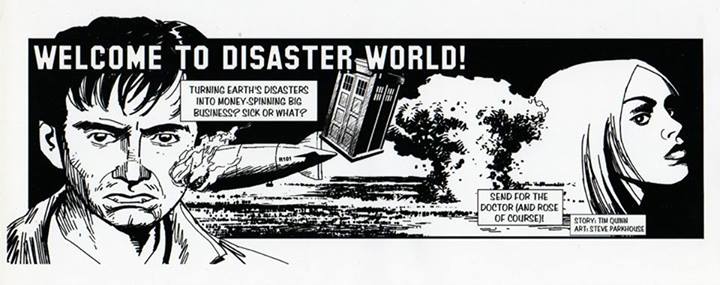
The closest we’ve come to it is the Radio Times weekly Doctor Who strip which ran for almost a year, written by Gary Russell and drawn, coincidentally, by Lee Sullivan, coloured by Alan Craddock.
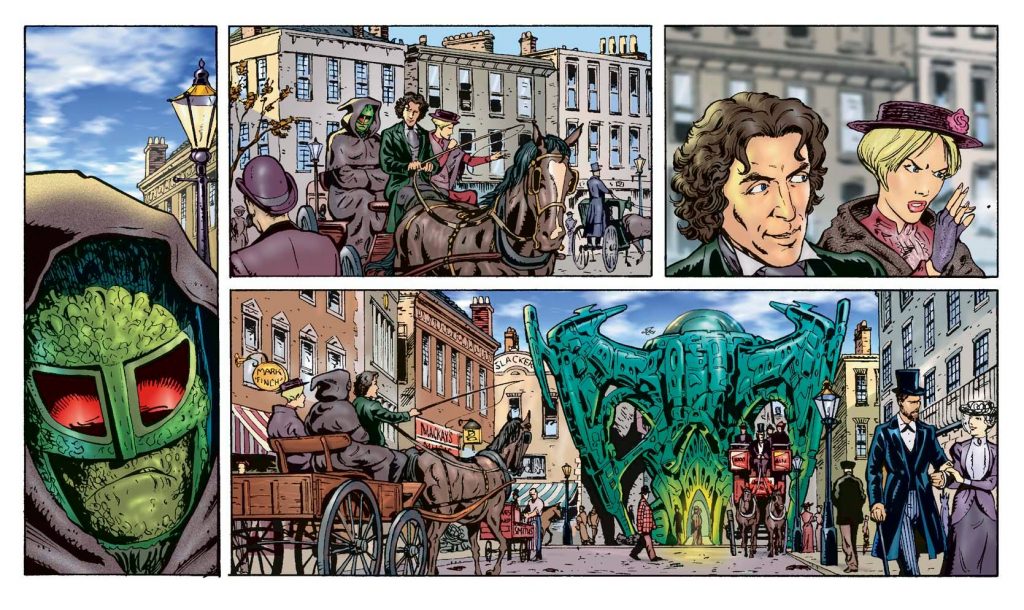
Perhaps, some day, a Doctor Who newspaper strip might happen. The programme still has a really wide audience, and it would be terrific if one could, perhaps, be part of the newly-announced Time Lords Victorious transmedia project, although I’m sure that has by now all been ironed out and plotted across multiple platforms already.
If the programme can keep going for nearly 60 years, why not a daily strip, too, even if it was only digital? I can still hope!
I’m sure it has more chance of publishing success than another proposal I had, a continuation of “The Daleks” strip from TV Century 21, with art, I think, by Mike Collins, pitched to Doctor Who Classic Comics. I was beaten to the punch on that one by Gary Russell!
John Freeman
Latest Update, October 2021: I’m working with artist Danny Cushion on completing this strip, just for fun, so have removed the previously-included plot outline from this item. Here’s a taster.
Special thanks to Paul Hanley permission to utilise his TARDIS console room design!
• Read Doctor Who – Terror from the Deep from the start
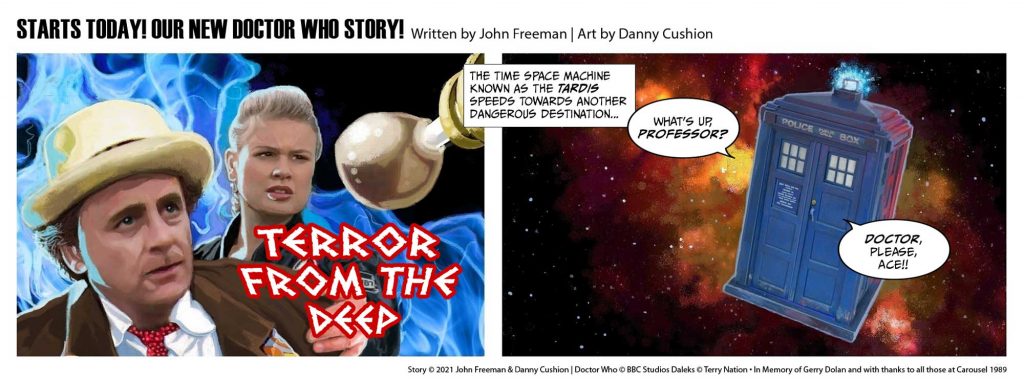
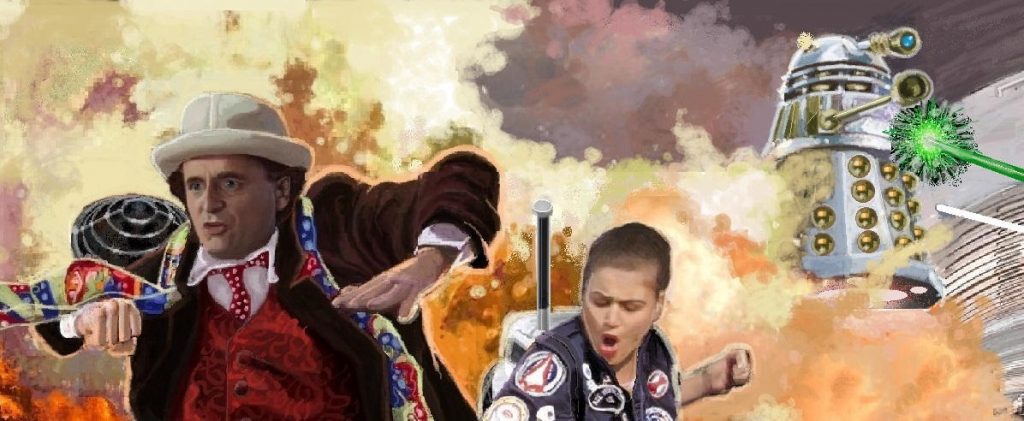
Web Links
• A tribute to Gerry Dolan on downthetubes, who died in 2015
• Lee Sullivan’s gallery featuring art from the Radio Times Doctor Who strip
• Mike Collins is online at www.freakhousegraphics.com
Also Not Coming Soon…
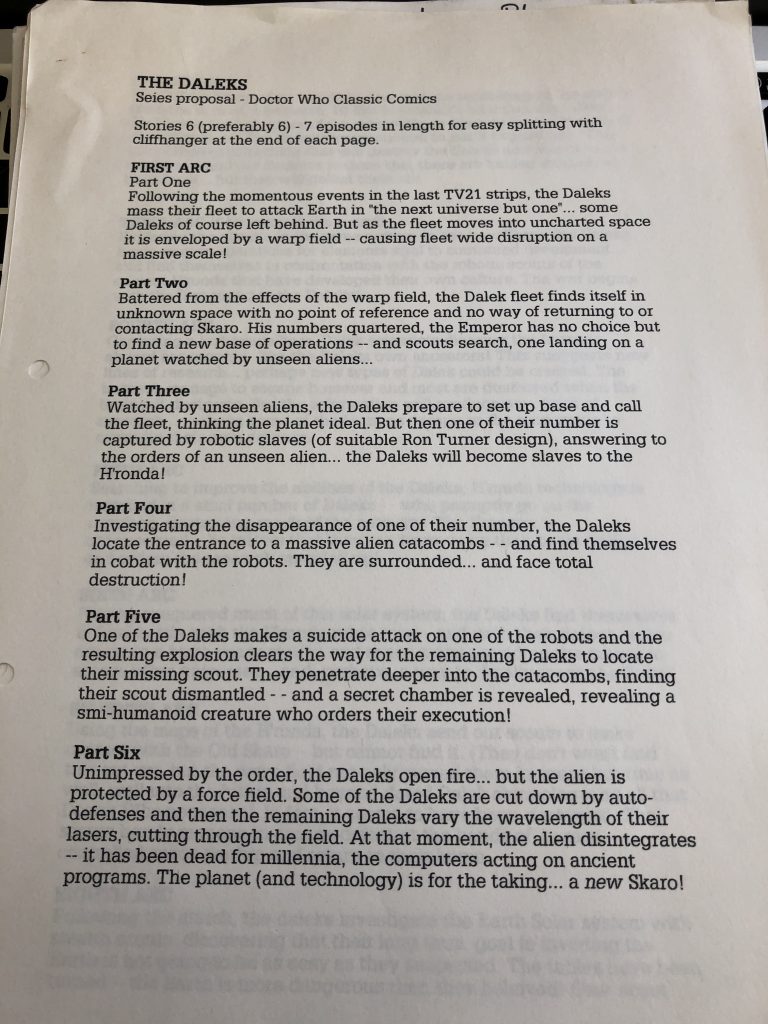
Doctor Who © BBC. No Daleks were harmed in the writing of this feature. Well, not many.
The founder of downthetubes, which he established in 1998. John works as a comics and magazine editor, writer, and on promotional work for the Lakes International Comic Art Festival. He is currently editor of Star Trek Explorer, published by Titan – his third tour of duty on the title originally titled Star Trek Magazine.
Working in British comics publishing since the 1980s, his credits include editor of titles such as Doctor Who Magazine, Babylon 5 Magazine, and more. He also edited the comics anthology STRIP Magazine and edited several audio comics for ROK Comics. He has also edited several comic collections, including volumes of “Charley’s War” and “Dan Dare”.
He’s the writer of “Pilgrim: Secrets and Lies” for B7 Comics; “Crucible”, a creator-owned project with 2000AD artist Smuzz; and “Death Duty” and “Skow Dogs” with Dave Hailwood.
Categories: British Comics, British Comics - Newspaper Strips, Comic Art, Comics, Creating Comics, Doctor Who, Features
